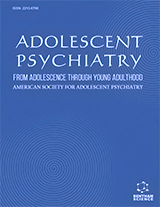Abstract
Background: Adolescents are at elevated risk for using and experimenting with substances such as alcohol, nicotine and marijuana. Research has demonstrated not only the harmful effects of these drugs on the developing brain, but that individuals with early use have a higher risk for substance use disorders (SUD’s) later in life. Given the current prevalence of substance use among youth, resources are needed to study, develop, and implement safe and effective treatment modalities. Because of the dearth of conventional medications for SUD’s, alternative methods of treatment must be explored. Complementary and alternative medicine (CAM) is a growing field with an ever-increasing evidence base.
Method: This paper presents a qualitative review of the present-day use of CAM within adolescents, and creates a conceptualization for its potential in treating substance use disorders.
Results: Mindfulness and yoga were found to have the largest evidence base, with limited current support for the use of acupuncture and supplements such as melatonin and St. John’s Wort. Further research is warranted to determine the true efficacy of these treatments in the adolescent population.
Conclusions: With the favorable safety profile of many of these forms of treatment, their use should be considered despite the limited evidence, especially in those who have failed other options.
Keywords: Adolescence, addiction, complementary and alternative medicine, substance use disorders.
Adolescent Psychiatry
Title:The Role of Complementary and Alternative Medicine in Adolescent Substance Use Disorders
Volume: 5 Issue: 2
Author(s): Justine Wittenauer, Michael Ascher, Alexis Briggie, Anna Kreiter and Jessica Chavez
Affiliation:
Keywords: Adolescence, addiction, complementary and alternative medicine, substance use disorders.
Abstract: Background: Adolescents are at elevated risk for using and experimenting with substances such as alcohol, nicotine and marijuana. Research has demonstrated not only the harmful effects of these drugs on the developing brain, but that individuals with early use have a higher risk for substance use disorders (SUD’s) later in life. Given the current prevalence of substance use among youth, resources are needed to study, develop, and implement safe and effective treatment modalities. Because of the dearth of conventional medications for SUD’s, alternative methods of treatment must be explored. Complementary and alternative medicine (CAM) is a growing field with an ever-increasing evidence base.
Method: This paper presents a qualitative review of the present-day use of CAM within adolescents, and creates a conceptualization for its potential in treating substance use disorders.
Results: Mindfulness and yoga were found to have the largest evidence base, with limited current support for the use of acupuncture and supplements such as melatonin and St. John’s Wort. Further research is warranted to determine the true efficacy of these treatments in the adolescent population.
Conclusions: With the favorable safety profile of many of these forms of treatment, their use should be considered despite the limited evidence, especially in those who have failed other options.
Export Options
About this article
Cite this article as:
Wittenauer Justine, Ascher Michael, Briggie Alexis, Kreiter Anna and Chavez Jessica, The Role of Complementary and Alternative Medicine in Adolescent Substance Use Disorders, Adolescent Psychiatry 2015; 5 (2) . https://dx.doi.org/10.2174/2210676605666150311224407
| DOI https://dx.doi.org/10.2174/2210676605666150311224407 |
Print ISSN 2210-6766 |
| Publisher Name Bentham Science Publisher |
Online ISSN 2210-6774 |
 55
55 1
1 1
1 1
1
- Author Guidelines
- Bentham Author Support Services (BASS)
- Graphical Abstracts
- Fabricating and Stating False Information
- Research Misconduct
- Post Publication Discussions and Corrections
- Publishing Ethics and Rectitude
- Increase Visibility of Your Article
- Archiving Policies
- Peer Review Workflow
- Order Your Article Before Print
- Promote Your Article
- Manuscript Transfer Facility
- Editorial Policies
- Allegations from Whistleblowers
- Announcements
Related Articles
-
Cefiderocol: A new Antimicrobial for Complicated Urinary Tract Infection
(CUTI) Caused by Carbapenem-resistant Enterobacteriaceae (CRE)
Current Drug Research Reviews Recent Advances in the Treatment of Helicobacter pylori Infection
Recent Patents on Anti-Infective Drug Discovery Bupropion in the Depression-Related Sexual Dysfunction: A Systematic Review
CNS & Neurological Disorders - Drug Targets The Efficacy and Potential Mechanisms of Chinese Herbal Medicine on Irritable Bowel Syndrome
Current Pharmaceutical Design The Therapeutic Potential of Neural Stem Cells in Traumatic Brain Injuries
Current Signal Transduction Therapy Anti-inflammatory Effect of Predimenol, A Bioactive Extract from <i>Phaleria macrocarpa</i>, through the Suppression of NF-κB and COX-2
Recent Advances in Inflammation & Allergy Drug Discovery The Effects of Newer Beta-Adrenoceptor Antagonists on Vascular Function in Cardiovascular Disease
Current Vascular Pharmacology Oxidative stress and Parkinson’s disease: New hopes in treatment with herbal antioxidants
Current Pharmaceutical Design Antidiabetic Oils
Current Diabetes Reviews The Use of Interferons in Respiratory Diseases
Current Respiratory Medicine Reviews Atypical Manifestations of Severe Acute Respiratory Syndrome Coronavirus 2 Infection in Children: A Systematic Review
Current Pediatric Reviews The 5-HT1B Receptor: A Novel Target for the Pathophysiology of Depression
Current Drug Targets Upper Airway Resistance Syndrome
Current Respiratory Medicine Reviews Genetic and Pharmacogenetic Aspects of Alcohol-Dependence
Current Pharmacogenomics Arterial Ischemic Stroke in Neonates and Children: Review and Current Issues
Current Pediatric Reviews Next Generation Tyrosine Kinase Inhibitor (TKI): Afatinib
Recent Patents on Anti-Cancer Drug Discovery Repositioning the Old Fungicide Ciclopirox for New Medical Uses
Current Pharmaceutical Design Strong Anti-tumorous Potential of Nardostachys jatamansi Rhizome Extract on Glioblastoma and In Silico Analysis of its Molecular Drug Targets
Current Cancer Drug Targets Preterm Labour: An Overview of Current and Emerging Therapeutics
Current Medicinal Chemistry Decoding the Inter-Relationship between Sleep Disorders and Alzheimer’s Disease Pathogenesis
CNS & Neurological Disorders - Drug Targets


























